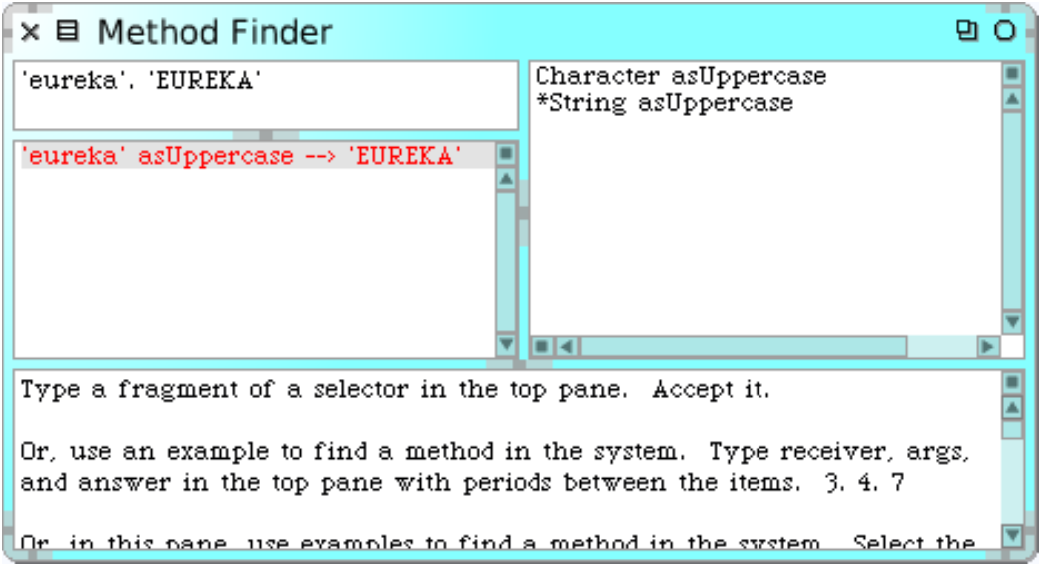1.9: Finding Methods
- Page ID
- 37363
Sometimes you can guess the name of a method, or at least part of the name of a method, more easily than the name of a class. For example, if you are interested in the current time, you might expect that there would be a method called “now”, or containing “now” as a substring. But where might it be? The method finder can help you.
\(\bigstar\) Drag the method finder icon out of the Tools flap. Type “now” in the top left pane, and accept it (or just press the RETURN key).
The method finder will display a list of all the method names that contain the substring “now”. To scroll to now itself, move the cursor to the list and type “n”; this trick works in all scrolling windows. Select “now” and the right-hand pane shows you the three classes that define a method with this name, as shown in Figure \(\PageIndex{1}\). Selecting any one of them will open a browser on it.
At other times you may have a good idea that a method exists, but will have no idea what it might be called. The method finder can still help! For example, suppose that you would like to find a method that turns a string into upper case, for example, it would translate 'eureka' into 'EUREKA'.

\(\bigstar\) Type 'eureka' . 'EUREKA' into the method finder and press the RETURN key, as shown in Figure \(\PageIndex{2}\).
The method finder will suggest a method that does what you want.
An asterisk at the beginning of a line in the right pane of the method finder indicates that this method is the one that was actually used to obtain the requested result. So, the asterisk in front of String asUppercase lets us know that the method asUppercase defined on the class String was executed and returned the result we wanted. The methods that do not have an asterisk are just the other methods that have the same name as the ones that returned the expected result. So Character»asUppercase was not executed on our example, because 'eureka' is not a Character object.
You can also use the method finder for methods with arguments; for example, if you are looking for a method that will find the greatest common factor of two integers, you might try 25. 35. 5 as an example. You can also give the method finder multiple examples to narrow the search space; the help text in the bottom pane explains more.



